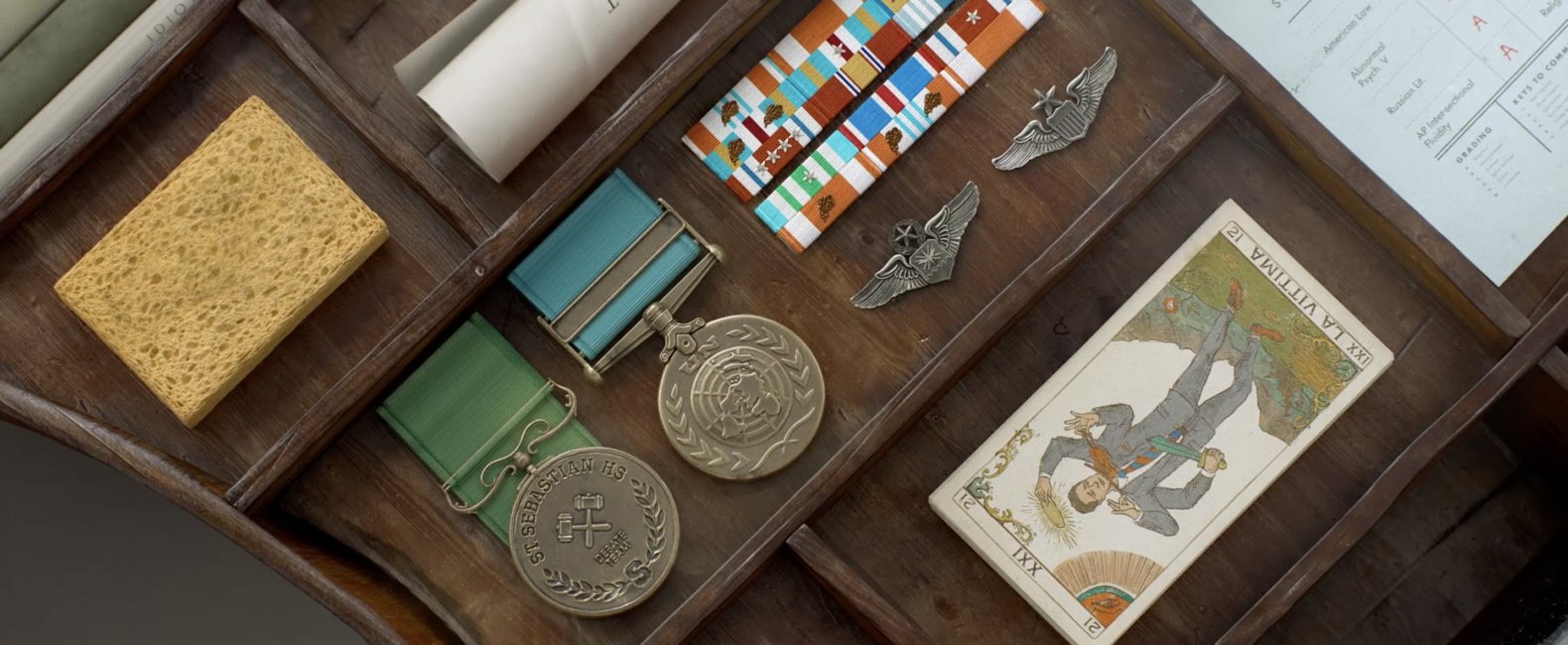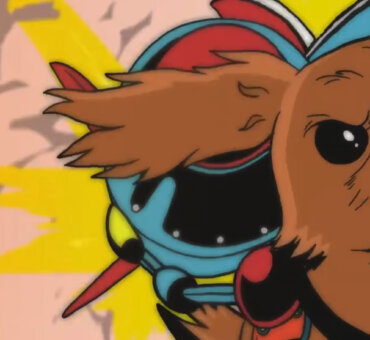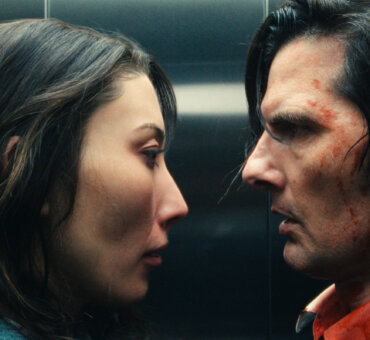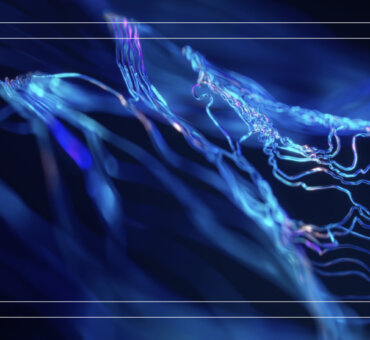Steve Jobs has an astute quote about getting things right: “Details matter.” While it may not be the most radical thing he ever said, it’s surely one of the truest things he said. In filmmaking, it applies nicely. Whether it’s on-set or in post-production, attention to detail can take your project from good to great, letting the viewer know that they’re in not just capable hands, but caring hands.
For directors Heidi Berg and Felix Soletic, attention to detail was everything when they started dreaming up the dream-like title sequence for Netflix’s The Politician. It’s an eery, fantastical, and entrancing sequence packed with little details the viewer may or may not understand. But, that doesn’t mean it should be ignored.
“In the beginning, one of our biggest questions was, ‘How do we craft a cabinet of figurative human curiosities as a title sequence?’’ That’s where our imaginings of the objects came into play,” Heidi told us.
Yes, details matter. And, as you’ll see in the title sequence, this fascinating work is the sum of its fascinating pieces. It’s a beautiful collaboration between famed writer Ryan Murphy, Producer Alexis Martin Woodall, and the team at Elastic, and in our conversation with Felix and Heidi, we talked about their work, about the meaning of some of these objects, and why pouring corn syrup on Ben Platt’s face was not in vain.
Here are directors Heidi Berg and Felix Soletic.
Beginnings
Felix Soletic: We started with Pose almost as an introductory project, where Heidi and myself were introduced to Ryan Murphy and the team. We were involved quite late in the process and it was much less demanding for both of us, technically and timeline-wise. The Politician was a project where both of us were able to craft something ahead of time with plenty of collaboration from the team.
Heidi Berg: Pose, which was my initial introduction to Ryan Murphy, was pretty much already planned out, as Felix mentioned. With Ryan, he generally knows exactly what he wants. This is why he’s Ryan Murphy. For Pose, he wanted a really straightforward version for the title sequence and he was using All That Jazz as inspiration. It was great. We just did it and executed it in the most beautiful way possible. It gave us a chance to craft a creative relationship, and that’s what led to The Politician.
With this show, Ryan honestly didn’t know what he wanted. It was unusual for Ryan. Usually, he has a million different ideas for a main title sequence. I remember we had these scripts, and they were super surreal. They had these “Wes Anderson” vibes. Ryan said, “Show me what you got.”
Filmsupply: How did you land on the mannequin concept?
Heidi: I remember during the concept phase of The Politician, Felix and I were nominated for an Emmy through our work on The Alienist’s title sequence. We were all out celebrating, and Felix leaned over to me and said, “I have this idea.” He starts to describe this Pinocchio-esque “real boy” and this idea of what makes a sociopathic politician tick, and the concept of a mannequin coming to life. It was so absurd and amazing to me, and I just said, “Yes.” We didn’t have a narrative or anything, but that was the initial birth of the idea.
And then, poor Felix [Laughs]. I was out of town at the time, so Felix went into the lion’s den with Kate Berry, our head of production, to make the presentation. It was his first time meeting Ryan and Alexis Martin Woodall, the president of Ryan Murphy productions.
Felix: It was a classic Hollywood scene. The whole office was finely curated and I felt afraid even sitting in one of the chairs. But, after I made the presentation, Ryan gave me this look where he shook his head like, Alright, I guess this is what we’re doing. He said, “I actually had three or four more ideas I was going to suggest, but let’s do that.” Then he asked how much time we needed and what we needed to make it happen. That’s the thing we love about him the most.
Finding the Tone
This piece has such an interesting tone. It’s both creepy and whimsical in a way.
Heidi: It truly is. For me, The Politician has these elements of magical realism and surrealism. It’s heavily art-directed, but also very absurd. You can’t tell if it’s being satirical or if it’s being serious. The audience doesn’t really know how to feel, and that’s what we love.
Felix: As we read the script, we saw the main character was following this hollow pursuit of things that ultimately didn’t matter. You get the sense that he’s this cool guy, but he’s really anything but. In some parts of the title sequence, we really poke fun at the character quite a lot. We weren’t really on the side of this sociopathic character and we wanted that to come through.
Heidi: The weird feeling also comes from these curated elements that have a gloss and a sheen, a facade of joy. But underneath there’s this underlying, unresolved issue. There’s trauma eating away at the core of this person. We loved the interplay between the curated facade and what’s really going on underneath.
In the beginning, one of our biggest challenges was figuring out how to make square compartments interesting. How do you keep this momentum going? How do you keep energy in the piece? This is where planning out the objects became so important—the meaning behind the objects, their look, and their textural quality. Our editor Rachel Fowler Mendez was foundational for helping us find a rhythm and flow between all those elements of CG, live action, and typography.
Filmsupply: How did you land on the mannequin concept?
Heidi: I remember during the concept phase of The Politician, Felix and I were nominated for an Emmy through our work on The Alienist’s title sequence. We were all out celebrating, and Felix leaned over to me and said, “I have this idea.” He starts to describe this Pinocchio-esque “real boy” and this idea of what makes a sociopathic politician tick, and the concept of a mannequin coming to life. It was so absurd and amazing to me, and I just said, “Yes.” We didn’t have a narrative or anything, but that was the initial birth of the idea.
And then, poor Felix [Laughs]. I was out of town at the time, so Felix went into the lion’s den with Kate Berry, our head of production, to make the presentation. It was his first time meeting Ryan and Alexis Martin Woodall, the president of Ryan Murphy productions.
Felix: It was a classic Hollywood scene. The whole office was finely curated and I felt afraid even sitting in one of the chairs. But, after I made the presentation, Ryan gave me this look where he shook his head like, Alright, I guess this is what we’re doing. He said, “I actually had three or four more ideas I was going to suggest, but let’s do that.” Then he asked how much time we needed and what we needed to make it happen. That’s the thing we love about him the most.
0:13 | Hornet
Let’s walk through some of these CGI items and the thought process behind them.
Heidi: One of my favorite easter eggs is our ‘horner’ as Felix and I like to call him. Our little trapped parasitoid wasp in the jar. Felix first introduced it. It’s a species that survives by taking advantage of other organisms, living off of the host body, eventually killing it. We loved this idea as a metaphor for this attribute that’s trapped inside Payton, the main character. It’s in there and it’s ready, but he’s trying to keep it contained.
0:19 | Idiot’s Guide to Clowning
Felix: Another one, which I love personally, is the Idiot’s Guide to Clowning. That was my favorite because it ended up trending on Twitter when the title sequence came out. It’s sitting next to a chronological set of presidential biographies and was our shot at the current political climate at the time. I’m honestly not sure how that went through all the legal and approvals, producers, and everything else.
0:31 | Crocodile Tears
Heidi: I love the crocodile tears that we created: a little statue as an homage to superficial sympathy. It just kills me every time.
Felix: Each object was its own isolated design exercise, which our team of modelers and sculptors really enjoyed. Many of the details you find sprinkled throughout came up during this back and forth with us and the team. And each round grew richer in detail and precision. There was a sense of enthusiasm shared by the entire team that really pushed us to make each bit the best that it could be.
Heidi: Some people like to say, “It was so collaborative.” But it was really true in this case.
0:32-0:35 | Ticker Tape
Filmsupply: We’re trying to read the ticker tape. What does it say?
Felix: There was this beautiful miscommunication that happened between Heidi and me. We had this Google Doc where we’d jot down ideas for the objects, no matter how rough. From the very beginning, there was this sense that this character only truly cares about these social causes because they’re currently occupying the cultural zeitgeist. There was this hollowness and shallowness to his whole virtue signaling in a way.
We wanted to make a device that would spit out these hashtags that were currently trending on Twitter, hinting at various social justice movements that were happening at the time—movements that seem like Payton would take advantage of to further his own causes. Heidi quickly wrote down “#whatmattersrightnow as a placeholder that we would come back to and elaborate on from a conceptual standpoint.
Heidi: I only wrote that as a placeholder. I literally meant to Google, “what’s trending?”
Felix: When I read it, I said, “This is so brilliant. Let’s please get the artist to put it in.” Several weeks from that point, when the asset was built and placed, Heidi is tilting their head and looking at it. “What matters right now?” [Laughs] It was only a placeholder, but to me, it encapsulated the concept perfectly.
0:38-0:44 | Black Goo and The Lift
Heidi: As I said before, we wanted to create the feeling of curated elements that have a gloss and a sheen, but underneath there’s this underlying issue. That gets to the moment with the black goo that’s going into the heart.
Felix: Exactly. I think of that moment where the mannequin is being hoisted up with all these perfectly manicured little pieces and moments, they’re all tumbling inside. You never see it, but you can imagine all the pieces tumbling inside; this corrosive goo spreading beyond its compartment and affecting other objects. If we ever got a chance to do a version 2.0, I would love to get a sense of the black corrosive goo pooling on one of the sleeves of this pristine Oxford shirt.
0:45-0:49 | Torso Shots
Heidi: The live-action sequence with the torso was definitely a more challenging part. We initially planned to build out a much larger piece of the torso than we ended up having. We came into the set expecting to have the whole thing and realized we didn’t have it.
Felix: The limitations forced us to be creative. The sculptors spent the night trying to get this thing to a good place, but we simply ran out of time. We ended up slapping on a macro lens and started whacking into it with this chisel and hammer. I’ll never forget the look on the sculptor’s face, who had been there sculpting the head from early morning. I said, “I’m so sorry, but we’ve got to beat the shit out of this thing.” Those shots are so deeply macro and you see the wood grain literally splitting fiber by fiber, and if it were a little wider we wouldn’t have gotten that. Responding to the accident was what made it fun.
Did you decide to go macro because it wasn’t looking right?
Heidi: The trouble we always run into is when we’re doing this interplay between CG and live-action, like the moments when those two pieces come together. That’s always a very tense situation. You have to consider the lensing, the lighting, and how those two things inform what we’re doing with CG so that they don’t feel too disparate.
If we’d gone a little bit wider and done the 3D model where we’re actually affecting it and carving into it, it would’ve been very tricky. As Felix said, we had planned to build out the torso and fully sculpt it so we could have been a little bit wider. We wanted details of the pectoral or some of the arm, but that just was not the situation we had once we got to set.
We decided to make the best of it and just get in tight to see the details. We knew we’d have to be very conscientious and choose shots that were going to embellish the 3D. We definitely had to make a choice between what we were going to spend a lot of time on and what we were just going to work around and make beautiful. Our DP Tim Jensen was a godsend in these moments, he lensed the macros in a way that played beautifully with our CG.
0:55-0:59 | Facial Goo
Heidi: We love Ben Platt. We asked him, “If you’re cool, we’re going to pour corn syrup on your face and film it.” [Laughs] And he was so down. Any time we are collaborating with the show’s actors, you don’t necessarily know what kind of time and flexibility you are going to get. We shot that on-set, and tested different liquids. Felix and I were trying to find the perfect viscosity and we ended up with corn syrup.
On the day of shooting, we planned that shot last and dumped a bucket of corn syrup on sweet Ben Platt. And, unfortunately, we didn’t end up using that shot. We have it, and we used it as a lovely reference for what we ended up doing with the 3D plate. But, our hope for using it straight out of the camera was not the case. It wasn’t our ideal situation, but we definitely needed that shot. Maybe it didn’t have to be poor Ben Platt, but we love him for doing it.
Felix: We’re all happy with how things turned out. It was quite a long road. It was close to a year when it was all said and done—other projects would come in to steal our time away. For both of us, it was a labor of love in the truest sense. We labored over it every day and put our mind and soul and heart into it.
There was a structure there at the beginning, but we tinkered with the CGI for a long time. That ticker box had around 108 versions at the very end. It was quite an iterative process. The little heart locket was re-textured 17 times to get the right type of pink and the right type of paint chipping. But at the very end, I remember all of us sitting together in the coloring suite doing the final projection and we all looked at each other and said, “This is very, very good.”
Read another conversation we had with Heidi and Felix as they take us beat by beat through Netflix’s Ratched title sequence.






